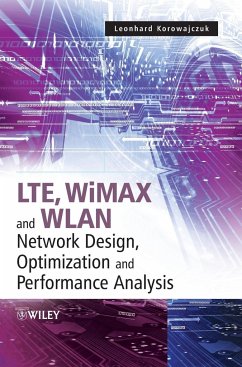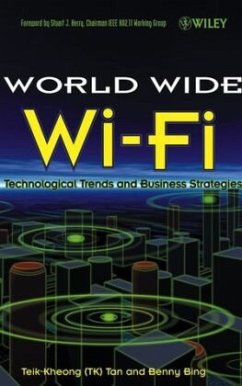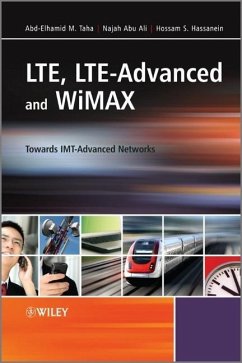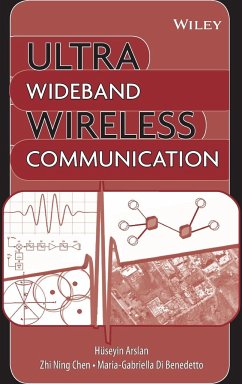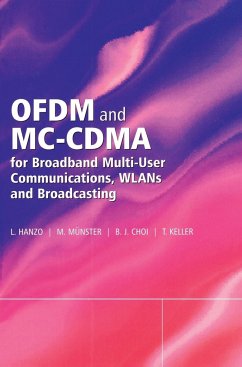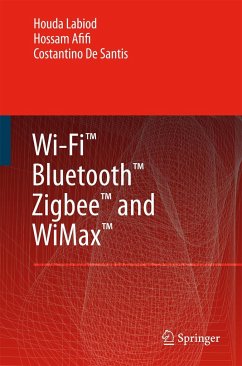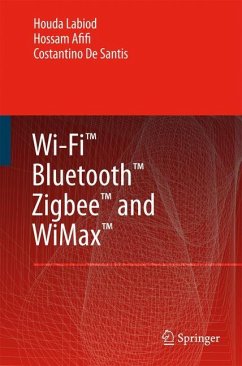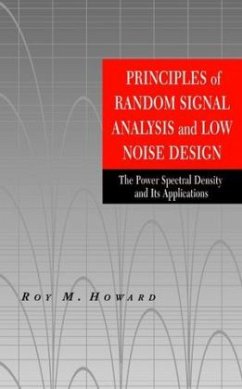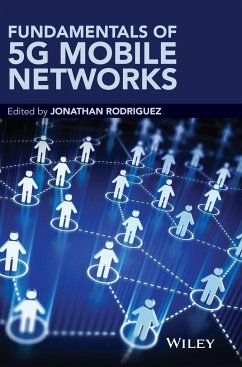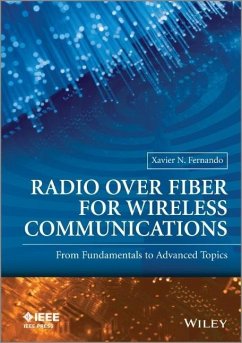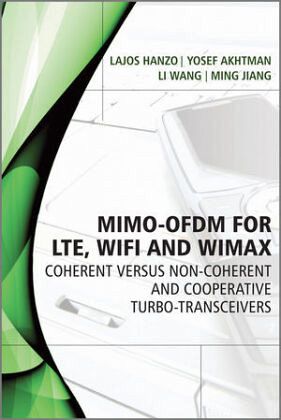
MIMO-OFDM for LTE, Wi-Fi and WiMAX
Coherent Versus Non-coherent and Cooperative Turbo-transceivers
By Lajos Hanzo, Yosef Akhtman, Wang Li, Ming Jiang
Versandkostenfrei!
Versandfertig in über 4 Wochen
174,99 €
inkl. MwSt.
Weitere Ausgaben:

PAYBACK Punkte
87 °P sammeln!
Maximum-Likelihood MIMO-OFDM Turbo-Transceivers for LTE, WIFI and WIMAX collects together and describes the latest techniques in the design of (turbo-) MIMO-OFDM wireless systems. The book examines a range of topical subjects including MIMO, channel coding, multiuser detection, sphere detection, spreading codes, channel estimation (including iterative methods), and SDM detection. Collectively these represent new treatments of MIMO-OFDM. This book also considers the joint benefits of turbo and LDPC channel coding, of the entire suite of known joint coding and modulation schemes, space-time coding as well as SDM/SDMA MIMOs in the context of various application examples.
MIMO-OFDM for LTE, WIFI and WIMAX: Coherent versus Non-Coherent and Cooperative Turbo-Transceivers provides an up-to-date portrayal of wireless transmission based on OFDM techniques augmented with Space-Time Block Codes (STBCs) and Spatial-Division Multiple Access (SDMA). The volume also offers an in-depth treatment of cutting-edge Cooperative Communications.
This monograph collates the latest techniques in a number of specific design areas of turbo-detected MIMO-OFDM wireless systems. As a result a wide range of topical subjects are examined, including channel coding and multiuser detection (MUD), with a special emphasis on optimum maximum-likelihood (ML) MUDs, reduced-complexity genetic algorithm aided near-ML MUDs and sphere detection. The benefits of spreading codes as well as joint iterative channel and data estimation are only a few of the radical new features of the book.
Also considered are the benefits of turbo and LDPC channel coding, the entire suite of known joint coding and modulation schemes, space-time coding as well as SDM/SDMA MIMOs within the context of various application examples. The book systematically converts the lessons of Shannon's information theory into design principles applicable to practical wireless systems; the depth of discussions increases towards the end of the book.
Discusses many state-of-the-art topics important to today's wireless communications engineers.
Includes numerous complete system design examples for the industrial practitioner.
Offers a detailed portrayal of sphere detection.
Based on over twenty years of research into OFDM in the context of various applications, subsequently presenting comprehensive bibliographies.
This monograph collates the latest techniques in a number of specific design areas of turbo-detected MIMO-OFDM wireless systems. As a result a wide range of topical subjects are examined, including channel coding and multiuser detection (MUD), with a special emphasis on optimum maximum-likelihood (ML) MUDs, reduced-complexity genetic algorithm aided near-ML MUDs and sphere detection. The benefits of spreading codes as well as joint iterative channel and data estimation are only a few of the radical new features of the book.
Also considered are the benefits of turbo and LDPC channel coding, the entire suite of known joint coding and modulation schemes, space-time coding as well as SDM/SDMA MIMOs within the context of various application examples. The book systematically converts the lessons of Shannon's information theory into design principles applicable to practical wireless systems; the depth of discussions increases towards the end of the book.
Discusses many state-of-the-art topics important to today's wireless communications engineers.
Includes numerous complete system design examples for the industrial practitioner.
Offers a detailed portrayal of sphere detection.
Based on over twenty years of research into OFDM in the context of various applications, subsequently presenting comprehensive bibliographies.




